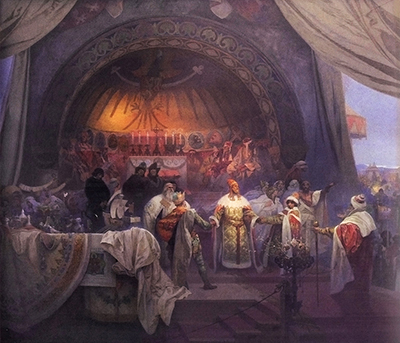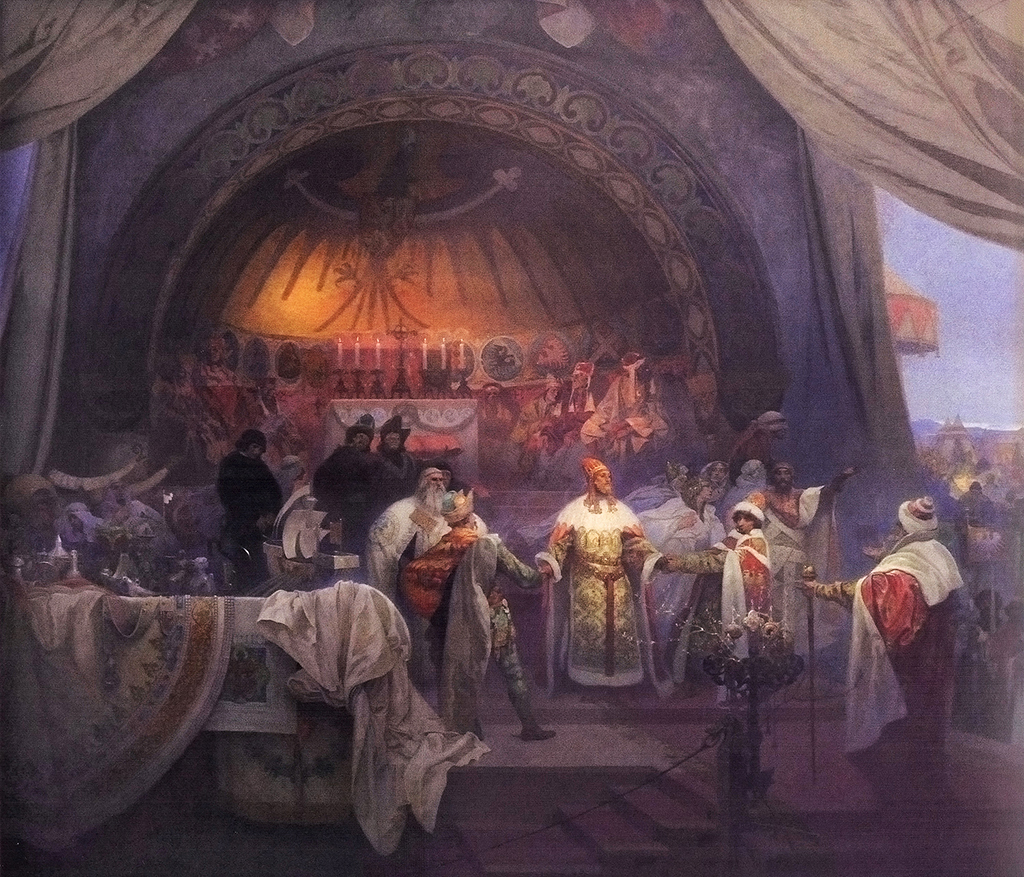This painting features a similar layout to The Bulgarian Tsar Simeon, which itself was one earlier within The Slav Epic series. In both we find a beautfully decorative arrangement of furniture and interior design, with central figures clearly marked by the artist.
Initially, it feels like another indoor scene, such is the level of detail afforded to the decoration around this painting. A second glance, though, reveals that actually we are in a series of highly complex outdoor structures which have been temporarily assembled in order to provide a resting place whilst on the move. To the right hand side we find a sky showing through as well as several smaller structures in which the less significant figures would have slept. It immediately feels somewhat grand to have this amount of luxury available whilst on the move, signifying the importance of the main figures found here. Mucha carefully directs bright light in order to lead our eyes and help build a hierarchy of status between the different individuals found in this composition.
Mucha continues in the smaller format that he switched to in the previous piece, with both measuring approximately five metres in width by four metres in height. King Přemysl Otakar II was the ruler of the region of Bohemia between the years of 1253 and 1278, underlining how the Slav Epic has now pushed forwards a good six hundred years from the original painting. This king was famous for military successes, and that explains the outdoor setting of this painting, where the entire army was no doubt on the move under his guidance. That said, he also helped to bring about agreements with others that ensured greater peace for the long term, ultimately to the benefit of the people he ruled. Alliances were key at this point in history, as a means to building a strength in concensus. The picture in front of us here may actually have been of the arrangement of marriage of related family members for the purposes of strengthening bonds, rather than a military operation as such.
The artist would normally portray his own people as peace-loving and vulnerable, where success was achieved through co-operation and friendship. This makes the whole series highly palatable to the Slavs, and perhaps might have been under direction from the patrons of the overall project. History can be filtered as much as changed, and few civilisations have ever wanted to be entirely honest about the negative elements of their own histories. Art would become a further tool by which to lead the path of history and impact people's minds in later generations about events which could ultimately be seen in different ways. This also works with portraiture, too, when in the years before professional photography, artists would be tasked with capturing key figures in the most flattering ways possible in order to protect how they would be viewed in later centuries.





